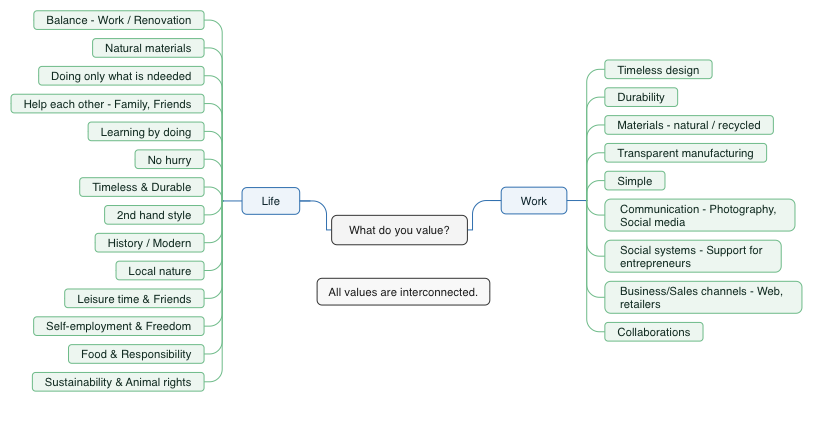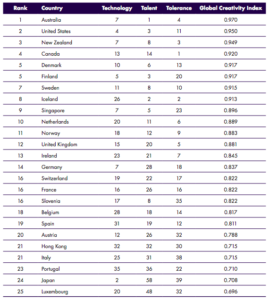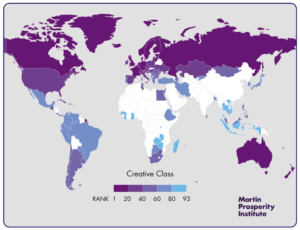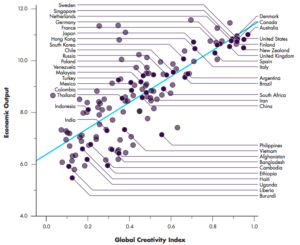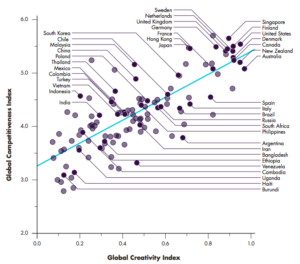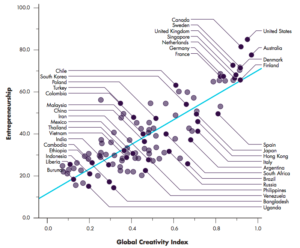Nordic studies 2nd day was held with guest Saana ja Olli and Viivi Laine. Saana san & Olli san are designers and a couple. Viivi san is an interior architect and designer. The theme of this session was TAUKO, that is one of the Finnish words, meaning “break”. They told about what do they find value in their life and work. I consider these are simple and natural, however these must be sources of happiness. I would like to think how they connect creativity.
What elements are needed to cultivate sustainability and creativity?
Saana ja Olli produce their own 100% hemp textile collection manufactured transparently and locally in Finland (JFDA website, 2018). They live in Turku which is the port city in the southwest of Finland. They renovated their home which was established as a school 100 years ago. They feel importance on food and penetrate vegan. On the weekend they help their grandfather’s farm and get their firewood or meditate in nature. They are designing together and make products using natural and recycled materials. Their trusted friend takes pictures and they use SNS to publicize economically and efficiently. I gathered some pieces what they find value in their life and work (Fig 1). I am especially inspired these three elements. They are learning by doing, for example when they renovated their house or started a business. They have a spirit help each other with their family and friends. They considered all these values are interconnected. Overall, I believe their way of living gives us a hint to be sustainable both in life and work.
Fig 1. What do you value? – Some pieces of Saana ja Olli
What things/experiences in daily life are useful for creativity?
Viivi Laine are living in Helsinki, Finland. Her approach is holistic in which architecture, interior and furniture come together. She strives for simple, functional and ecological solution. Modern heritage describes her work best (JFDA website, 2018). She worked at big architectural firm and engaged in the big projects. As the client’s work style has changed, her project designed the office where employees are free to change space. I considered this was one of the power of design influenced the work style. Now she is a freelance interior architect and designer. She works with two architectural firms and performs high quality work. I feel she has huge responsibility to effect and enlighten people putting her philosophy practice. Interestingly, on the vacation she enjoys hunting with her dog. Her way of spending vacation taught me that it was important to have an original place to return wild. Fig 2 shows some of pieces what she is inspired and finds value.
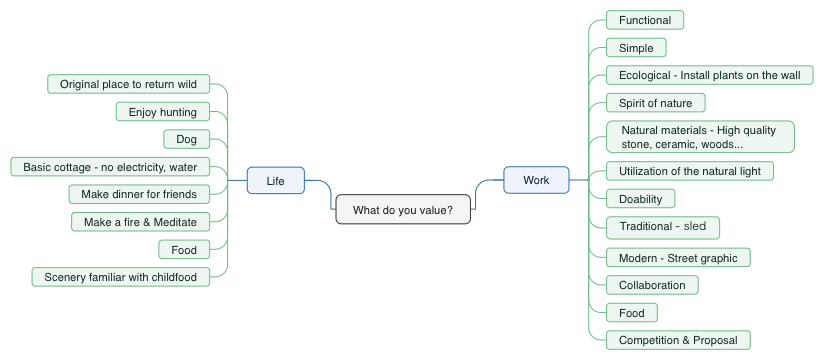
Fig 2. What do you value? – Some pieces of Viivi san
I recognized that their stories commonly mentioned these following things.
- They thank to nature and food.
- They have a place to return themselves.
- They merge modern and tradition or update modernly.
- They have philosophy in themselves and their products.
- They notice the truly valuable ways and pursue them.
- They don’t force themselves.
After this session, I cleaned up my home because it is thankful space for my family. Can I feel any timeless spirit or traditional culture in my daily life? Do I have any original places that I can find myself? Am I living in a hurry? I would like to interact these precious ideas into my life and work. I believe some seeds which I plant produce creativity.
Photography: invisible-hand
References
- JFDA. (2018). Saana ja Olli. Japan Finland Design Association. Retrieved from https://www.japanfinland.com/kipp-harbor-times/
- JFDA. (2018). Viivi Laine. Japan Finland Design Association. Retrieved from https://www.japanfinland.com/vanguard-bureaucratic-suspense/


